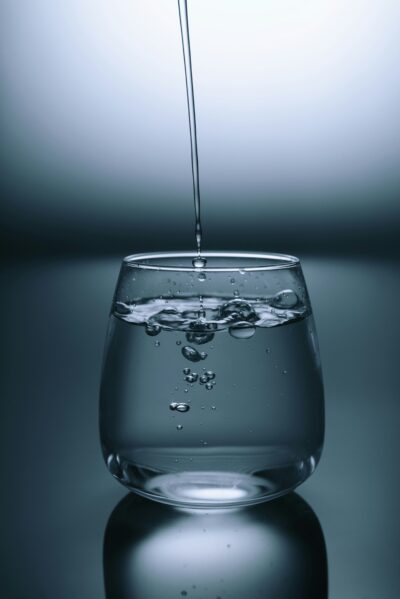Heat, Fire
General Principles
Bitter, cool, pungent foods are beneficial. In general, a higher proportion of raw foods-vegetables and fruits-is appropriate. This approach to diet is also beneficial for people who are constitutionally hot or yang excess, even in the absence of specific symptoms.
Acute Heat patterns
During acute Heat patterns, such as those characterized by acute fever, sweating and thirst, keeping up fluids is essential. The best strategy is to use plenty of liquids like fruit and vegetable juices, herbal teas and broths or light soups. Warm or room temperature liquids are preferred. Iced or cold liquids should be avoided as they can impact negatively on the Spleen.
During an attack of Wind Heat, the Heat is trapped in the superficial layers of the body (wei level), and requires opening of the pores (diaphoresis, sweating) to release the pathogen. Wind Heat patterns are acute and self limiting, so dietary approaches are generally only used for a few days. Pungent, cool, dispersing foods are useful as teas or in soups, particularly peppermint, pear, radish, watercress and cabbage. Warming and supplementing foods, such as lamb, beef, chicken, shellfish and warming spices should be avoided.
Chronic Heat patterns
Cooking methods that increase the warming thermal nature of foods, such as roasting, frying and deep frying are not appropriate. Light cooking, such as steaming and stir frying is recommended. Some whole raw foods are useful (except in Stomach Heat, see below), relative to any accompanying degree of deficiency. Combine raw foods with cooked foods, or use light blanching to slightly warm food while retaining freshness.
Avoid heating and stimulating substances, in particular alcohol, coffee, red meats, rich, creamy food and deep fried food. Diuretic foods such as celery, cucumber and beetroot, are useful to stimulate urination and provide an escape route for the Heat.
Stomach Heat
In Stomach and Intestinal Heat patterns, whole raw foods may be too physically abrasive and irritating to already inflamed tissues. Juices are generally well tolerated. Other foods may need to be well cooked and soft, or even mashed in severe cases, until the Heat and inflammation clears and the Stomach strengthens.
Heat, Fire
General Comments – Short cooking times,cooking in plenty of water, steaming stir frying, water soups with plenty of vegetables, some raw foods (especially salad items, sprouts, juices); more liquids in general
No: deep frying, BBQ or roasting; overeating
Beneficial – celery, spinach, swiss chard, cucumber, lettuce, radish, asparagus, eggplant (aubergine), savoy and chinese cabbage, tomato, broccoli, cauliflower, zucchini, apple, pear, watermelon, millet, wheat, barley, tofu, tempeh, soymilk (in moderation), yogurt (sheep and goat’s especially), mung bean and alfalfa sprouts, kelp, spirulina, crab
Stomach Heat – Mucilaginous foods to cool, moisten and line the Stomach: rice, barley, millet or oat porriage, banana, avocado, cucumber, spinach, lettuce, rocket (arugula), watercress, cabbage (juiced as well as cooked), tofu, soymilk (in moderation), yogurt (sheep and goat’s especially).
Liver Heat – peppermint, mung beans and sprouts, celery, radish, daikon, kelp, lettuce, dandelion, cucumber, watercress, millet, tofu
Heat in the Lungs – watercress, apple, pear, peach, strawberry, lemon, radish, carrot, pumpkin, cabbage, cauliflower, spinach, swiss chard, white fungus (wood ear)
Heat in the Blood – Cooling and haemostatic foods for bleeding: eggplant (aubergine), spinach, swiss chard, persimmon, lemon, celery, lettuce, olive
Restrict or avoid – chilies, cinnamon, ginger, black pepper, garlic, mustard, horseradish, coffee, chocolate, heated (usually cheap) vegetable oils, red meat (especially lamb), chicken, alcohol, vinegar, prawns, mantis shrimp, cheese, eggs, excessive salt, peanuts
Damp Heat
The principles are similar to those applicable to the Heat clearing and Damp drying diet, depending on the mixture of Dampness and Heat. Proportions are similar to those for Heat in general, with a little less carbohydrate and more pulses and vegetable proteins in place of animal proteins. Raw foods may or may not be appropriate depending on the degree of Dampness present. Individuals will vary in their responses, and experimentation with varying mixtures of raw, cooked and carbohydrate rich food is necessary.
A major feature of a Damp Heat diet is avoidance of the specific foods that aggravate Damp Heat, notably alcohol, cheese, deep fried food and fatty meats.
General Comments – Eat less; light simple foods, some raw foods and juices; plenty of lightly cooked leafy greens
Beneficial – millet, wheat, barley, aduki beans, celery, carrot, spinach, swiss chard, eggplant (aubergine), chinese cabbage, tomato, broccoli, peas, cauliflower, asparagus, lemon, cranberry, watercress, rocket (arugula), lettuce, radish, daikon, legumes, mung bean and alfalfa sprouts, tofu, tempeh, green and red tea, water, Sparingly: olive oil, root vegetables
Liver/Gallbladder – mung bean, mung bean and alfalfa sprouts, celery, kelp, lettuce, tofu, leafy greens, shiitake mushroom, peppermint tea, chrysanthemum tea, dandelion tea
Urinary Bladder – aduki bean, mung bean, barley water, celery, asparagus, diluted lemon juice, cranberry juice, blueberries, watermelon, dandelion tea, green tea
Restrict or avoid – alcohol, greasy or oily food, deep fried food, fatty meat, eggs, cheese, sugar, concentrated sweeteners, chocolate, junk food, nuts and seeds (especially peanuts), chilies, cinammon, ginger, black pepper, garlic, mustard, horseradish, coffee, vinegar, prawns, mantis shrimp, excessive salt
Phlegm Heat
General Comments – Eat less; light simple foods, some raw foods and juices; plenty of lightly cooked leafy greens
Beneficial – bamboo shoots, watercress, radish, kelp and seaweed, turnip, persimmon, shiitake mushroom, rice milk
Restrict or avoid – alcohol, coffee, greasy or oily food, deep fried food, fatty meat, eggs, all dairy products including eggs and cheese, sugar, concentrated sweeteners, chocolate, junk food, nuts and seeds (especially peanuts), banana, avocado, pineapple, excessive salt
Recommended proportions for clearing heat and fire
PROTEIN 10%
CARBOHYDRATE 30%
VEGETABLE/FRUIT 40-60%



